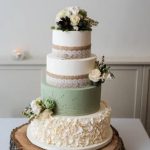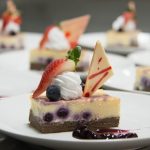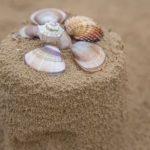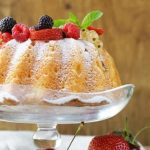Decorating a cake with icing is not just about making it visually appealing but also about showcasing creativity and adding a personal touch. Whether it’s a special occasion or simply a sweet treat to indulge in, the art of cake decoration can truly elevate the overall experience. Icing, in particular, plays a crucial role in this process as it allows for endless possibilities when it comes to creating intricate designs and patterns on the cake’s surface.
Icing serves as the canvas on which decorators can unleash their imagination and bring their ideas to life. From simple swirls and flourishes to elaborate floral arrangements, the type of icing used can significantly impact the outcome of the design. Understanding the different types of icing available, such as buttercream, royal icing, fondant, and ganache, is essential for achieving desired results in cake decoration.
In addition to having a creative vision, having the right tools is equally important when it comes to decorating cakes with icing. Piping bags, tips of various shapes and sizes, spatulas, offset spatulas, and other tools are essential for achieving precision and control while working with icing. With the right techniques and tools at hand, anyone can turn a basic cake into a work of art that is sure to impress both visually and taste-wise.
Types of Icing
Icing is a crucial element when it comes to decorating cakes, as it adds both flavor and aesthetic appeal to the finished product. There are various types of icing that can be used to decorate cakes, each with its own unique texture and uses. Understanding the differences between these types of icing is essential in achieving the desired design for your cake.
Here are some common types of icing that are popularly used in cake decorating:
- Buttercream: Buttercream icing is a versatile option that is easy to work with and provides a smooth finish. It is made from butter, powdered sugar, and flavorings, making it perfect for piping decorations or covering an entire cake.
- Royal Icing: Royal icing is a hard-drying icing made from confectioners’ sugar and egg whites. It is commonly used for intricate designs like piped flowers, lacework, and detailed decorations.
- Fondant: Fondant is a pliable dough-like icing made from powdered sugar, gelatin, water, and glycerin. It can be rolled out into thin sheets and draped over cakes to create a seamless finish ideal for sculpting intricate designs.
- Ganache: Ganache is a smooth and glossy mixture of chocolate and cream that can be used as both a filling and an icing. It offers a rich flavor and decadent finish that is perfect for elegant cake designs.
Each type of icing has its own set of advantages and challenges, so choosing the right one will depend on the design you have in mind and your skill level in cake decorating. Experimenting with different types of icing will help you discover which one works best for your desired cake decoration.
When learning how to decorate cakes with icing at home in Hindi, it’s important to familiarize yourself with these different types of icings so you can choose the most suitable one for your design. Whether you prefer the smooth finish of buttercream, the intricate details of royal icing, the versatility of fondant, or the richness of ganache, mastering these different types will allow you to unleash your creativity in cake decoration.
Essential Tools
When it comes to decorating a cake with icing at home, having the right tools is essential to achieve professional-looking results. Here is a list of essential tools needed for cake decorating with icing:
- Piping bags: These are used to apply different designs and patterns with icing onto the cake. Make sure to have a variety of sizes for different types of decorations.
- Tips: Piping tips come in various shapes and sizes, allowing you to create different designs like flowers, stars, shells, and more. Have a collection of tips to experiment with different techniques.
- Spatulas: Both straight and offset spatulas are necessary for smoothing out icing on the cake’s surface and creating clean finishes.
Additionally, here are some other tools that can come in handy for cake decorating with icing:
- Cake turntable: This rotating platform makes it easier to ice the sides and top of the cake evenly and smoothly.
- Decorating combs: Texture combs can help create unique designs on the cake’s surface, adding extra flair to your decorations.
- Decorating brushes: Brushes are useful for painting details or applying edible glitter or luster dust for a shimmery effect.
With these essential tools in hand, you’ll be well-equipped to start your cake decorating journey at home. Experimenting with different techniques and designs will help you improve your skills over time and create stunning cakes that are sure to impress.
Remember to practice patience and precision as you work with these tools, allowing yourself room for creativity and innovation in your cake decorating endeavors. Enjoy the process of transforming a plain cake into a masterpiece with beautiful icing decorations.
Preparing the Cake
When it comes to decorating a cake with icing, one of the key steps to ensuring a professional finish is preparing the cake properly. This involves several important steps such as leveling, crumb coating, and chilling the cake before applying the final layer of icing. These steps are crucial in creating a smooth surface for your decorations and ensuring that the icing adheres well to the cake.
Leveling the Cake
Before you start decorating your cake with icing, it is essential to level it to ensure an even surface. Use a long serrated knife or cake leveler to trim off any domed areas on top of the cake layers. This step not only makes your cakes look more polished but also helps in creating stability when stacking multiple layers.
Crumb Coating
After leveling your cake, it is recommended to apply a crumb coat before adding the final layer of icing. A crumb coat is a thin layer of icing that seals in any loose crumbs and provides a smooth base for the final decorative layer. Spread a thin layer of icing over the entire cake and let it set before proceeding with adding additional decorations.
Chilling the Cake
Once you have leveled and crumb coated your cake, it is important to chill it in the refrigerator for at least 30 minutes before continuing with the decoration process. Chilling helps firm up the icing and makes it easier to work with when adding intricate designs or details.
Additionally, chilling can help prevent any crumbs from mixing into your final layer of icing, giving you a clean and professional-looking finish. Following these tips on preparing your cake will set you up for success as you embark on decorating your cake with icing at home in Hindi.
Basic Icing Techniques
Icing is an essential element when it comes to decorating cakes, as it not only adds flavor but also provides a beautiful canvas for creating stunning designs. Learning basic icing techniques is crucial for any aspiring cake decorator.
Whether you are a beginner or an experienced baker, mastering these techniques can elevate your cake decorating skills to the next level. In this section, we will explore some fundamental icing techniques that will help you create professional-looking cakes right in your own kitchen.
Smoothing
One of the most important basic icing techniques is smoothing. To achieve a smooth finish on your cake, start by applying a thin layer of icing all over the cake to create a base coat. Then, use a bench scraper or offset spatula to smooth out any bumps or imperfections. The key is to work quickly and methodically to ensure an even surface. Practice makes perfect, so don’t be discouraged if it takes some time to master this technique.
Piping Borders
Piping borders is another essential skill that can add a touch of elegance to your cake design. Using a piping bag fitted with a decorative tip, pipe different border designs around the edges of your cake. From simple lines to elaborate lace patterns, there are endless possibilities when it comes to piping borders. Experiment with different tips and techniques to find the style that suits your cake best.
Writing Messages and Creating Simple Designs
Adding personalized messages or simple designs to cakes is a great way to make them more special. To write messages on cakes, fill a piping bag with icing and carefully pipe out letters or words onto the cake surface. For simple designs like flowers, hearts, or stars, use different shaped tips on your piping bag to create visually appealing decorations. Practice writing and drawing on parchment paper before moving on to decorating your actual cake for better precision and control.
Incorporating these basic icing techniques into your cake decorating repertoire will set you on the path towards creating beautifully decorated cakes at home in Hindi using
Advanced Icing Techniques
When it comes to taking your cake decorating skills to the next level, advanced icing techniques can really elevate the look of your creations. One popular technique is creating rosettes, which involves using a star-shaped piping tip and swirling the icing in a circular motion to mimic the look of a rose. This adds a touch of elegance and sophistication to any cake.
Another advanced icing technique is incorporating ruffles into your design. Ruffles can be achieved by piping thin layers of icing in a back-and-forth motion, building up volume along the way. This technique is perfect for adding texture and movement to your cake decorations, giving them a whimsical and unique look.
For those looking to create a trendy and visually appealing cake, ombre effects are a fantastic option. Ombre involves blending different shades of icing together seamlessly, creating a gradient effect that goes from light to dark or vice versa. This technique can be achieved using various colors of icing or by adding food coloring to achieve the desired gradient effect.
Lastly, marbling is another advanced icing technique that adds sophistication and visual interest to cakes. Marbling involves swirling different colored icings together in a natural or abstract pattern to create a beautiful marbled effect. This technique allows for endless creativity and customization, making each cake truly unique.
| Advanced Icing Technique | Description |
|---|---|
| Rosettes | Creating swirls with star-shaped piping tips for an elegant rose-like design. |
| Ruffles | Piping thin layers of icing in a back-and-forth motion to add texture and movement. |
| Ombre Effects | Blending different shades of icing together for a gradient effect from light to dark. |
| Marbling | Swirling different colored icings together for visually striking marble patterns. |
Troubleshooting
When it comes to decorating cakes with icing, there are some common issues that many people face. One of the most common problems is air bubbles forming in the icing as you’re piping. To prevent this, make sure to gently tap the piping bag before starting to release any trapped air.
Additionally, practicing consistent pressure while piping can help avoid air pockets. If you do encounter air bubbles, using a toothpick to gently release them or smoothing them out with an offset spatula can fix the issue.
Another common problem when decorating cakes with icing is achieving a smooth finish. Uneven surfaces on the cake can make it challenging to achieve a flawless look. To address this issue, ensure that your cake is properly leveled before applying the crumb coat and final layer of icing.
Using a bench scraper or offset spatula dipped in warm water can help achieve a smooth finish. If you notice any imperfections after applying the icing, gently heat the spatula and run it over the surface for a professional-looking result.
Furthermore, color consistency can be an obstacle when decorating cakes with icing, especially when trying to achieve uniform shades for intricate designs. To maintain color consistency, it’s essential to use gel food coloring instead of liquid ones since they have more concentrated pigments.
Start by adding small amounts of coloring at a time and mix thoroughly until you reach your desired shade. If you need to create multiple batches of colored icing, measure out and mix them separately to ensure consistent colors across all your decorations.
| Common Issue | Solution |
|---|---|
| Air bubbles in icing while piping | Gently tap piping bag before starting; apply consistent pressure while piping; use toothpick or offset spatula to release air bubbles |
| Uneven surface causing bumpy finish | Level cake properly before applying icing; use bench scraper or warm spatula for smooth finish; fix imperfections by heating spatula gently |
| Inconsistent coloring of icing | Use gel food coloring for concentrated pigments; add small amounts of coloring at a time; mix separately if creating multiple batches for consistent colors |
Decorating Tips in Hindi
Decorating a cake with icing is not only a fun and creative process but also adds that extra special touch to any homemade dessert. The type of icing used can truly make or break the design of a cake, which is why understanding the different varieties such as buttercream, royal icing, fondant, and ganache is crucial. Each type has its own unique characteristics and uses, allowing for endless possibilities when it comes to decorating.
To successfully decorate a cake with icing at home, having the essential tools is necessary. Items such as piping bags, tips, spatulas, and offset spatulas are indispensable in achieving professional-looking designs. These tools help in creating intricate patterns, smooth finishes, and precise details that will elevate the overall appearance of your cake.
Preparing the cake properly before applying icing is another key step in the decorating process. Techniques like leveling the cake layers, crumb coating to seal in crumbs, and chilling to set the layers will ensure a smooth canvas for your icing design. By following these steps diligently and paying attention to detail, you’ll be able to create stunning cakes that are sure to impress any crowd. And remember, practice makes perfect when it comes to mastering different icing techniques.

Welcome to my blog about home and family. This blog is a place where I will share my thoughts, ideas, and experiences related to these important topics. I am a stay-at-home mom with two young children. I hope you enjoy reading it! and may find some helpful tips and ideas that will make your home and family life even better!





